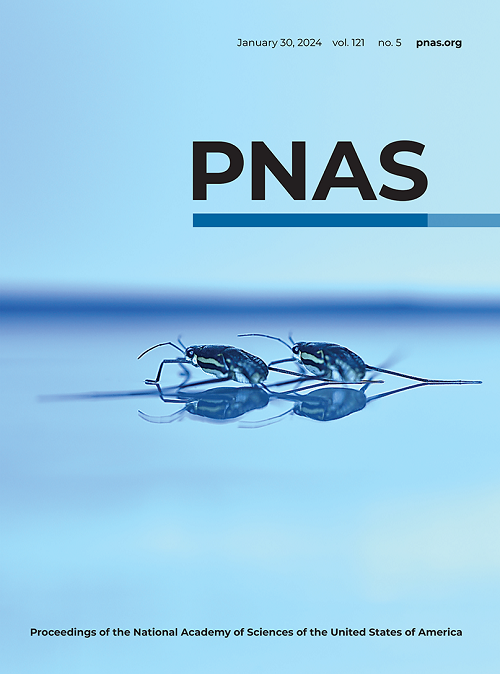Structural state governs the mechanism of shear-band propagation in metallic glasses.
IF 9.1
1区 综合性期刊
Q1 MULTIDISCIPLINARY SCIENCES
Proceedings of the National Academy of Sciences of the United States of America
Pub Date : 2025-07-01
DOI:10.1073/pnas.2427082122
引用次数: 0
Abstract
Shear bands (SBs) play a critical role in determining the mechanical behavior of metallic glasses (MGs). However, the rapid dynamics and highly localized nature of SB propagation present significant challenges for direct observation of their atomistic mechanisms using experimental techniques. In this study, we employ hybrid molecular dynamics/Monte Carlo simulations to investigate the atomic-scale mechanisms of SB propagation in Mg65Cu25Y10 MGs, prepared using cooling rates as slow as 104 K s-1-comparable to experimental casting conditions and significantly slower than the 1010 K s-1 rates previously employed in atomistic simulations. Our results reveal a qualitative shift in SB propagation mechanisms as the structural state evolves with decreasing cooling rates. In hyperquenched MGs, SB propagation occurs intermittently, characterized by a "stop-and-go" motion driven by sequential activation and coalescence of multiple shear transformation zones (STZs) separated by vortex-like fields. In contrast, slowly cooled MGs exhibit continuous and rapid SB propagation, mediated by localized shear softening and the formation of large vortex fields, indicative of a more collective structural response. This transition arises from significant differences in the number density and spatial distribution of activated STZs across different structural states. These findings provide insights into the microscopic dynamics of SB initiation and propagation in MGs, highlighting how the structural state can be strategically tuned to control SB behavior. This opens up different opportunities for optimizing the mechanical performance of MGs for targeted engineering applications.结构状态决定了金属玻璃剪切带的传播机制。
剪切带(SBs)对金属玻璃的力学行为起着至关重要的作用。然而,SB传播的快速动态和高度局域性给利用实验技术直接观察其原子机制带来了重大挑战。在这项研究中,我们采用混合分子动力学/蒙特卡罗模拟来研究SB在Mg65Cu25Y10 mg合金中的原子尺度传播机制。Mg65Cu25Y10 mg合金的冷却速度低至104 K s-1,与实验铸造条件相当,明显低于之前原子模拟中使用的1010 K s-1速率。我们的研究结果表明,随着冷却速率的降低,SB的传播机制发生了质的变化。在超淬火mg中,SB的传播是间歇性的,其特征是由多个剪切转变区(STZs)的顺序激活和合并驱动的“走走停停”运动,这些剪切转变区被涡状场分开。相比之下,缓慢冷却的mg表现出连续和快速的SB传播,由局部剪切软化和大涡场的形成介导,表明更集体的结构响应。这种转变源于不同结构状态下活化stz的数量密度和空间分布的显著差异。这些发现为SB在mg中产生和传播的微观动力学提供了见解,强调了如何战略性地调整结构状态来控制SB的行为。这为针对目标工程应用优化mg的机械性能提供了不同的机会。
本文章由计算机程序翻译,如有差异,请以英文原文为准。
求助全文
约1分钟内获得全文
求助全文
来源期刊
CiteScore
19.00
自引率
0.90%
发文量
3575
审稿时长
2.5 months
期刊介绍:
The Proceedings of the National Academy of Sciences (PNAS), a peer-reviewed journal of the National Academy of Sciences (NAS), serves as an authoritative source for high-impact, original research across the biological, physical, and social sciences. With a global scope, the journal welcomes submissions from researchers worldwide, making it an inclusive platform for advancing scientific knowledge.

 求助内容:
求助内容: 应助结果提醒方式:
应助结果提醒方式:


